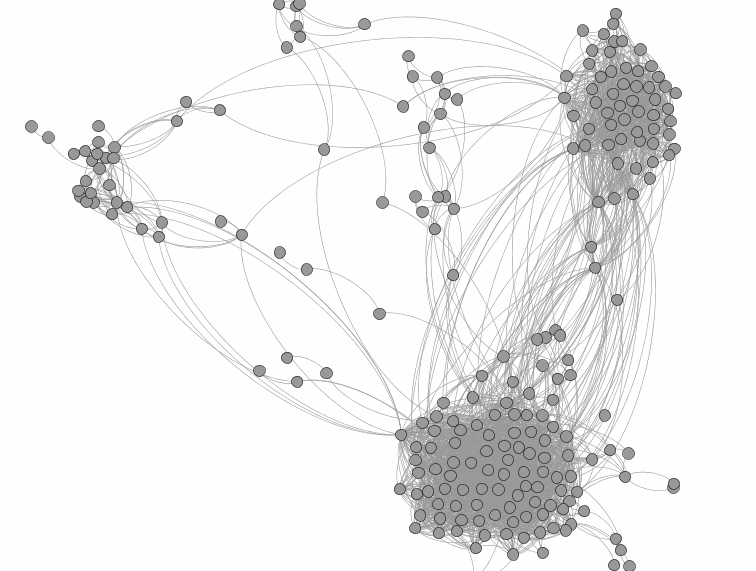Lately a topic that’s been on my mind is the idea of network efficiency. This considers how a topic can hit a group of networked individuals so that it effectively gets spread throughout its network. To think about this topic another way, how many people did the Harlem Shake need to hit for it to go ‘viral’ instead of just falling into obscurity like many other videos. Could a small subset of people effectively have enough reach and traction to reach a few hundred thousand others?
An Intro To Networks…
Something to keep in mind about networks (social networks, interpersonal networks and the like) is that there are two key components , nodes and edges. A node is an individual entity in a network ( ie: a person) and an edge is the different connections between the nodes. Now obviously, certain nodes have more edges, this connects them to many more nodes. Depending on the connections of the nodes, some have similar connections or some that are not similar at all. Why is knowing this useful? Information shared by a node with many edges spreads messaging more effectively than one with just a few. Also, two unrelated but highly connected nodes can share messaging with a larger reach and less overlap compared to two that are similarly matched. This means a higher rate of separate connections= more reach= more effective messaging spread. (To learn a bit more about network graphs have a look here)

Here is a look at my Facebook social network displayed through a program called Gephi. The circles in this picture are my individual friends (or nodes) and the lines between them displays how they are connected ( the edges)
Making Something the Next Big Conversation Topic
I could go into a bit more depth with this topic but I want to keep this post pretty short. At the end of the day, the idea of nodes and edges in a social or interpersonal network sense can be related back to how quickly and effectively a message is spread. Imagine if we could know which people in a network are needed to best get a message across. Instead of spraying a group with your message you could get it to the right people and have it evenly distributed throughout.Knowing what efforts are needed to make your content reach your target group rather than become some little known code on the web can ensure increased success and better use of resources.








